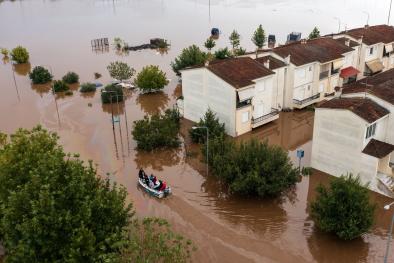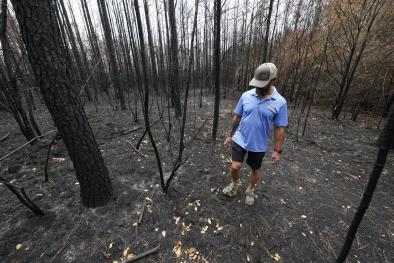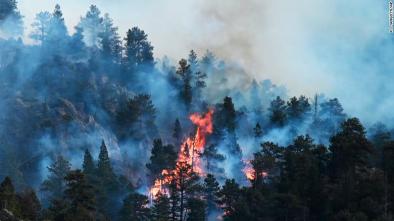Science Source
Association of Tropical Cyclones With County-Level Mortality in the US
Study key findings & significance
- From 1988 to 2018, hurricanes and other tropical cyclones in the U.S.
Related Content
Science Source
Severe Lake Heatwaves Attributable to Human-Induced Global Warming
Study key findings & significance
- Severe lake heat waves in the world's largest lakes are twice as likely to occur, on average, as they were during a pre-industrial climate.
- Nearly all severe lake heat waves occurring over the past 20 years were due in some part to climate change, and could become between three and 25 times more likely by the end of the century.
Author quotes
"What really stood out was the magnitude of human contribution: Most of the severe lake heat waves we looked at had a significant anthropogenic imprint...the
Related Content
Science Source
Turbidity and fecal indicator bacteria in recreational marine waters increase following the 2018 Woolsey Fire
Study key findings & significance
- The November 2018 Woolsey Fire in Southern California’s Los Angeles and Ventura counties left the adjacent coastal waters with unusually high levels of fecal bacteria and sediment that remained for months.
- Scientists combined satellite imagery, precipitation data, and water quality reports to assess two standard parameters for coastal water quality after the fire: the presence of fecal indicator bacteria and the turbidity, or cloudiness, of the water.
- The post-fire monthly average of total coliforms – a large group of fecal
Related Content
Headline

Nov 17, 2023 | Climate Nexus Hot News
Utility Responsible For Wildfire, CA Report Says
Headline

Oct 26, 2023 | Climate Nexus Hot News
The Planet is ‘Under Siege,’ Scientists Say
Headline

Oct 11, 2023 | Climate Nexus Hot News
Climate Change Forcing Children to Move
Headline

Sep 20, 2023 | AP
In a state used to hurricanes and flooding, Louisiana is battling an unprecedented wildfire season
Science Source
Timing of emergence of modern rates of sea-level rise by 1863
Study key findings & significance
- Modern global sea level rise patterns emerged along with the Emancipation Proclamation in 1863.
- The sea level rise coincides with the increase of coal use during and after the U.S.
Related Content
Science Source
Decreasing rainfall frequency contributes to earlier leaf onset in northern ecosystems
Study key findings & significance
- Plants are leafing out earlier than ever in recent decades in northern regions, including the U.S., Europe, and China, due to climate change.
- The researchers attribute the early greening to two key factors: warmer temperatures and fewer rainy days.
- Scientists already knew that warmer temperatures due to climate change had caused plants to leaf out sooner in the year in recent decades, but these new findings show that fewer rainy days are also a big reason why.
Author quotes
“This contrasti
Related Content
Headline

Jan 24, 2022 | Reuters
Firefighters gaining control of wildfire that closed scenic California highway
Event

Jan 5, 2022
Marshall Fire December 2021
Headline

Dec 7, 2021 | The Guardian
Winter heatwave breaks records in four US states
Headline

Nov 17, 2021 | Climate Nexus Hot News
Deadly Wildfires Burn In Eastern Rockies


